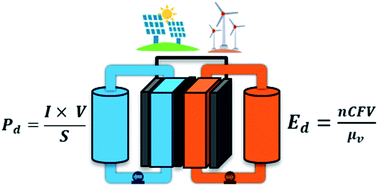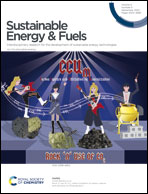Recent advancements in rational design of non-aqueous organic redox flow batteries
Abstract
In this review, we summarize the state-of-the-art advancements made in organic redox flow batteries (ORFBs) with special emphasis on non-aqueous (NAq) electrolytes. ORFBs utilize earth-abundant and potentially cost-effective organic redox-active molecules (ORMs), and have rapidly gained scientific interest. Transitioning from aqueous (Aq) solvents to NAq electrolytes expands the stable electrochemical windows available in ORFBs, thus offering great potential to increase both power density and energy density. To combine the advantages of ORMs and NAq electrolytes, non-aqueous organic redox flow batteries (NAqORFBs) have emerged. Recent advances in NAqORFBs have focused on the development of ORMs with large redox potential differences, multi-electron transfer capabilities, improved solubility, and stability. Strategies for preventing the crossover of redox-active species have also been documented. Collectively, these studies potentiate NAqORFBs as an important approach for sustainable energy storage. Still greater opportunities to further increase the battery performance through increased energy density, energy efficiency, and cycling lifetime can be realized by molecular engineering of ORMs and rational design of battery cells. We, therefore, review the critical principles that need to be considered in engineering NAqORFBs, and conclude with a discussion of emerging possibilities in these areas.

- This article is part of the themed collection: Sustainable Energy and Fuels Recent Review Articles


 Please wait while we load your content...
Please wait while we load your content...
